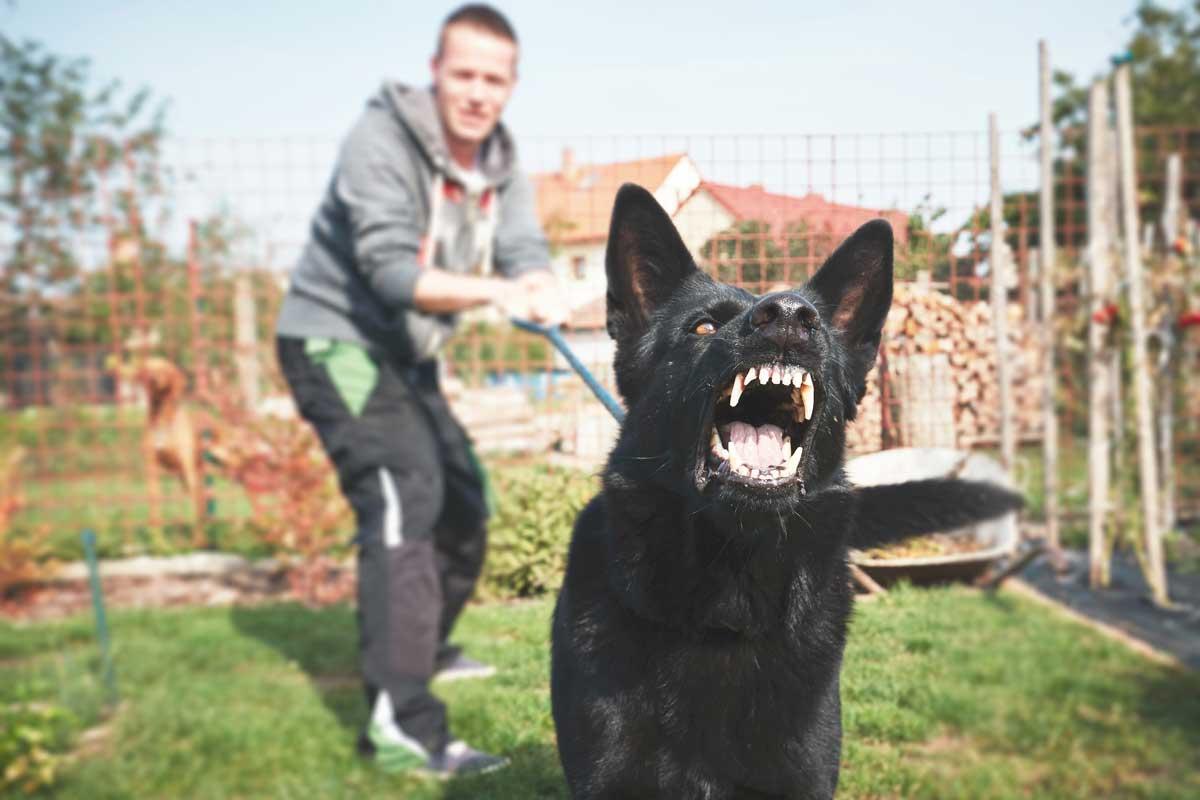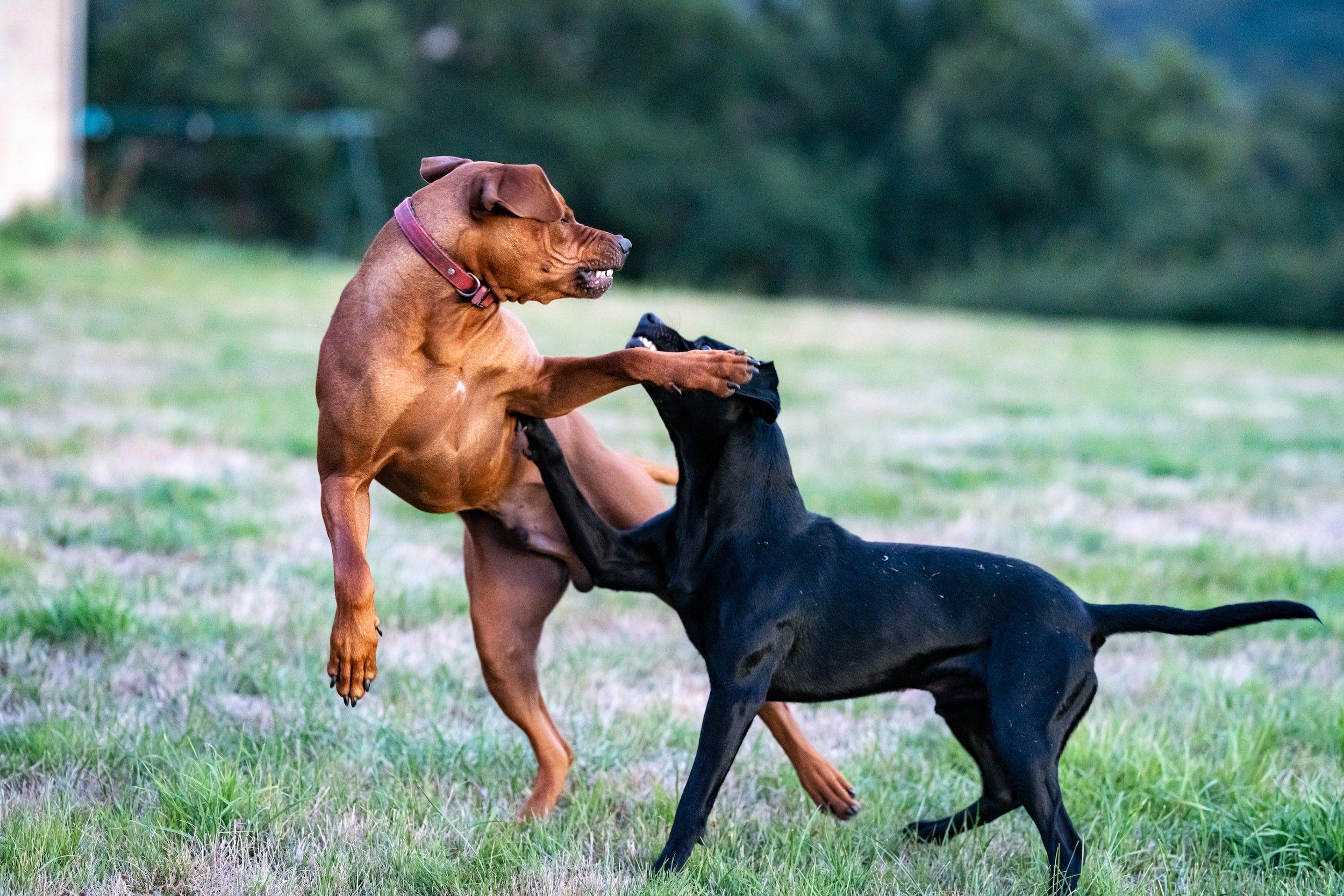Welcoming a furry friend into your home can be one of life’s greatest joys, but for some pet owners, the experience comes with unexpected challenges. If you have an aggressive dog, it can be disheartening and overwhelming, leaving you feeling uncertain about how to ensure a safe and happy environment for both your pet and your family. The good news is that with patience, understanding, and the right training techniques, you can transform your dog’s behavior and cultivate a healthier relationship.
In this article, we’ll explore effective strategies for managing and training aggressive dogs, providing you with practical steps to help your pup become the well-behaved companion you’ve always desired. Whether your dog shows aggression towards strangers, other animals, or even within the confines of your home, our friendly guidance will empower you to foster a calmer, more peaceful atmosphere. Let’s embark on this journey together toward a happier, more harmonious life with your canine companion!
Table of Contents
- Understanding the Roots of Aggression in Dogs
- Creating a Safe and Comfortable Environment
- Implementing Positive Reinforcement Techniques
- Establishing a Consistent Training Routine
- Q&A
- Wrapping Up
Understanding the Roots of Aggression in Dogs
To effectively address aggression in dogs, it’s crucial to first comprehend the underlying causes. Aggression may stem from a variety of influences, including fear, territorial instincts, and poor socialization. When dogs perceive a threat—whether real or imaginary—they may react aggressively as a defense mechanism. It’s essential to recognize that aggression is often a symptom of deeper issues, rather than a behavior that exists in isolation. Understanding this promotes a more empathetic approach to managing and training your dog.
Moreover, the environment plays a significant role in shaping a dog’s behavior. Factors such as past traumatic experiences, lack of structure, and insufficient exercise can contribute to aggressive tendencies. To help your dog feel more secure and confident, consider implementing the following strategies:
- Establish a consistent routine
- Provide ample physical and mental stimulation
- Encourage positive interactions with other dogs and people
By addressing both the emotional and environmental aspects of your dog’s life, you can pave the way for a happier, less aggressive pet.
Creating a Safe and Comfortable Environment
Establishing a calm and nurturing atmosphere is vital in addressing aggressive behavior in dogs. This environment not only helps in reducing stress for your pet but also fosters trust and security. To create this sanctuary, consider the following elements:
- Consistent Routine: Dogs thrive on predictability, so establish a daily schedule for feeding, walks, and playtime.
- Safe Space: Designate an area where your dog can retreat to feel safe when stressed, equipped with their favorite toys and a comfy bed.
- Positive Reinforcement: Use treats and praise to reward calm behavior, which encourages a more relaxed demeanor.
- Avoid Triggers: Identify specific situations or stimuli that provoke aggression and work to minimize exposure to them.
Furthermore, the physical setup of your home should promote a sense of security. Make sure your living space is free of clutter and potential hazards that could startle your dog. You can also implement the following strategies:
- Controlled Interactions: Limit encounters with other animals or people until your dog becomes more comfortable and less reactive.
- Calm Energy: Your demeanor impacts your dog; maintain a serene presence to help soothe their anxiety.
- Training Zones: Create distinct areas for training sessions, away from distractions, to enhance focus and learning.
Implementing Positive Reinforcement Techniques
To effectively track and analyze your dog’s progress, consider creating a behavior reward chart. This log can help you visually see improvements and maintain motivation for both you and your pet. Below is a simple example of how to structure your chart:
| Day | Behavior Observed | Reward Given |
|---|---|---|
| Monday | Sit on command | 5-minute play session |
| Tuesday | Walks without pulling | Favorite treat |
| Wednesday | Calm during visitors | Extra cuddle time |
Incorporating a variety of rewards can keep the training fresh and engaging. Consider mixing up the treats or alternate between praise and play. By using positive reinforcement consistently, your aggressive dog will learn to respond positively to certain cues, leading to a more harmonious relationship between you and your furry friend.
Establishing a Consistent Training Routine
Creating a reliable training schedule is essential for transforming an aggressive dog into a well-behaved companion. Consistency is key; regular training sessions will help reinforce desired behaviors and establish a deep bond of trust between you and your pet. Aim to dedicate a specific time each day for training, ensuring that both you and your dog are in a calm environment free from distractions. This can include routines such as
- Morning walks to expend excess energy and promote good behavior.
- Short training sessions throughout the day to practice commands and reinforce positive behaviors.
- Evening quiet time for relaxation and reflection, fostering a sense of security.
Moreover, consider keeping a training journal to track progress and identify patterns in your dog’s behavior. Documenting instances of aggression can provide valuable insights, enabling you to tailor your training effectively. Use a simple table to record key details:
| Date | Situation | Dog’s Behavior | Training Response |
|---|---|---|---|
| October 1 | Encountering another dog | Exhibited barking | Redirected with a treat |
| October 2 | Doorbell rang | Jumped and growled | Practiced “sit” command |
By adhering to a structured routine and monitoring your dog’s reactions, you’ll be better equipped to address aggression and promote a calmer demeanor over time. Remember, patience and persistence are your best allies in this journey.
Q&A
Q&A:
Q1: What are some common signs of aggression in dogs?
A: Common signs of aggression in dogs can include growling, baring teeth, snapping, lunging, barking excessively, and stiff body posture. You may also notice signs of fear such as cowering or avoiding eye contact. Recognizing these signs early can help you address the behavior before it escalates.
Q2: What causes aggression in dogs?
A: Aggression in dogs can stem from various sources including fear, lack of socialization, past trauma, possessiveness over food or toys, or even a genetic predisposition. Understanding the root cause of your dog’s aggression is crucial in developing an effective training plan.
Q3: How can I safely handle an aggressive dog?
A: Safety is a priority when handling an aggressive dog. Use a leash and muzzle if necessary, and avoid situations that may trigger aggressive behavior. Stay calm and avoid yelling, as this can further provoke your dog. Always be aware of your dog’s body language and remove them from stressful situations when possible.
Q4: What training methods are effective for aggressive dogs?
A: Positive reinforcement is one of the most effective methods for training aggressive dogs. Reward good behavior with treats, praise, or affection. Techniques such as desensitization and counter-conditioning can also help, gradually introducing your dog to their triggers in a controlled and positive environment.
Q5: Should I consider professional training for my aggressive dog?
A: Yes, professional trainers or behaviorists with experience in aggression can provide valuable insights and structured training plans tailored to your dog’s specific needs. They can also help ensure that you are using the right techniques to facilitate a safe and effective training process.
Q6: How long does it take to train an aggressive dog?
A: The timeline for training an aggressive dog varies greatly depending on the severity of the aggression, the underlying cause, and the consistency of the training. Some dogs may show improvement within weeks, while others may require months of patient work. Remember, every dog is different, and progress may not be linear.
Q7: Can aggression be completely eliminated in dogs?
A: While some dogs may overcome their aggressive tendencies, others may still exhibit aggressive behaviors even after training. The goal is often to manage and reduce the aggression, making the dog more comfortable and less reactive. Ongoing training and management strategies will help create a safer environment for both you and your pet.
Q8: What can I do at home to help my aggressive dog?
A: At home, create a calm and predictable environment. Use positive reinforcement when your dog exhibits good behavior and establish a consistent routine. Regular exercise and mental stimulation can also help reduce stress and prevent aggressive outbursts. Socialization with other dogs and people, under controlled conditions, can gradually improve your dog’s comfort level.
Q9: How can I tell if my dog’s aggression is improving?
A: Signs of improvement may include reduced frequency of aggressive incidents, increased calmness in situations that previously triggered aggression, and greater willingness to engage with people or other dogs. Keeping a journal of your dog’s behavior can help you track progress over time.
Q10: What should I do if my dog’s aggression escalates?
A: If your dog’s aggression escalates despite training efforts, seek the guidance of a professional dog trainer or behaviorist immediately. They can help assess the situation and develop a safety plan, ensuring the well-being of both your dog and those around them.
Remember, addressing aggression in dogs takes time, patience, and love. With the right approach, you can help your furry friend become happier and more relaxed!
Wrapping Up
training an aggressive dog may seem daunting, but with patience, consistency, and the right techniques, you can pave the way for a happier and more harmonious relationship with your furry friend. Remember, every dog is unique, and what works for one may not work for another. Don’t hesitate to seek guidance from a professional trainer or behaviorist if you encounter challenges along the way. Always prioritize positive reinforcement and encourage your dog with love and understanding. With time and effort, you can transform aggressive behavior into a confident, well-adjusted pet who thrives in your home and community. Here’s to a brighter future for both you and your four-legged companion!

















